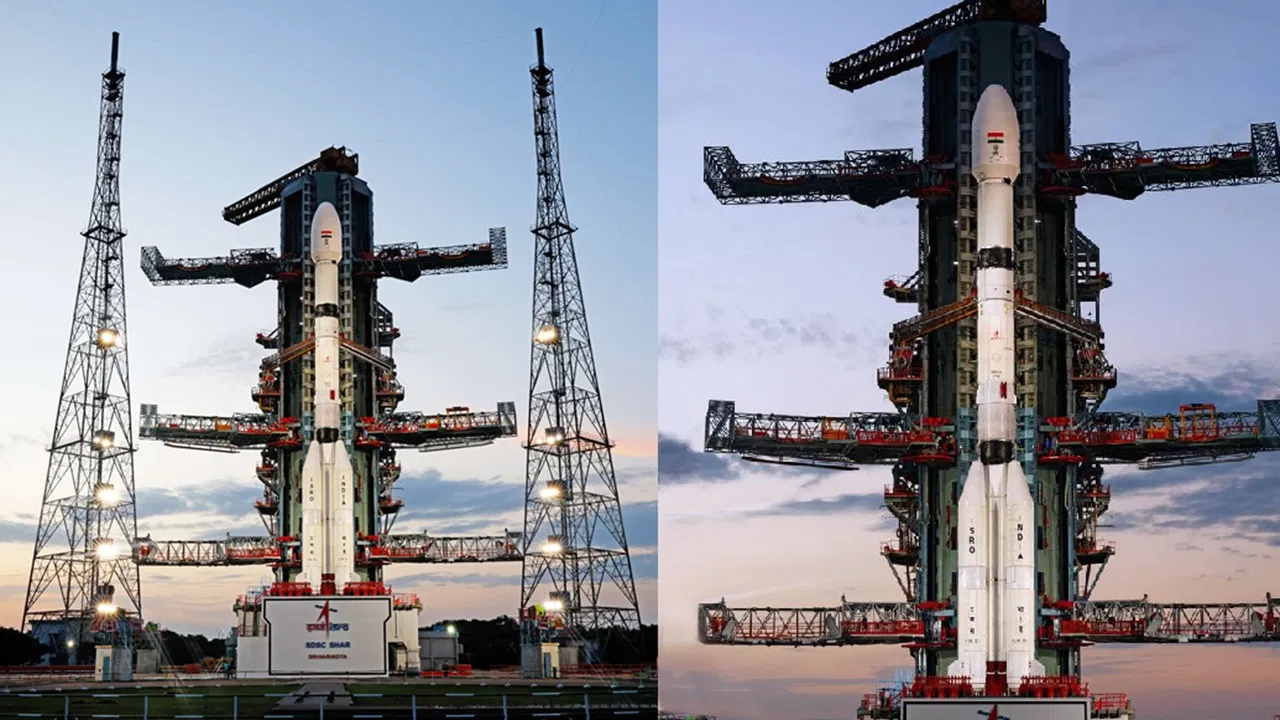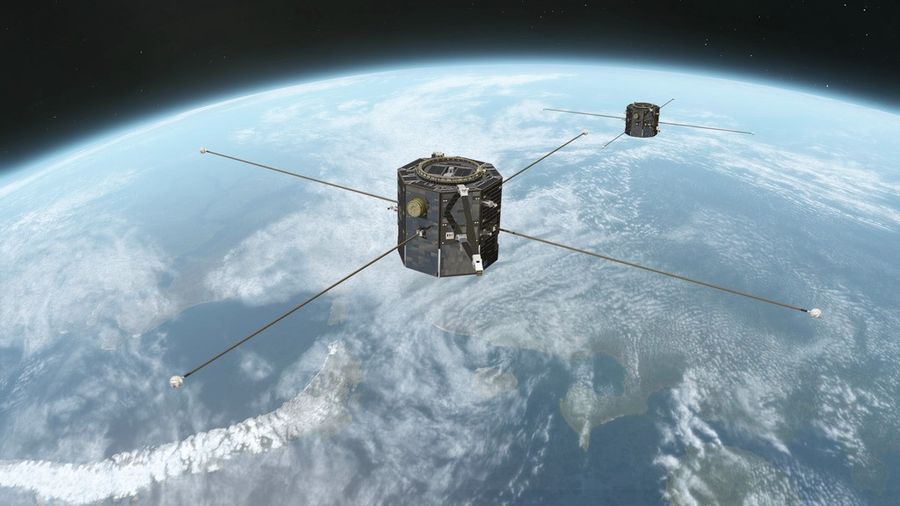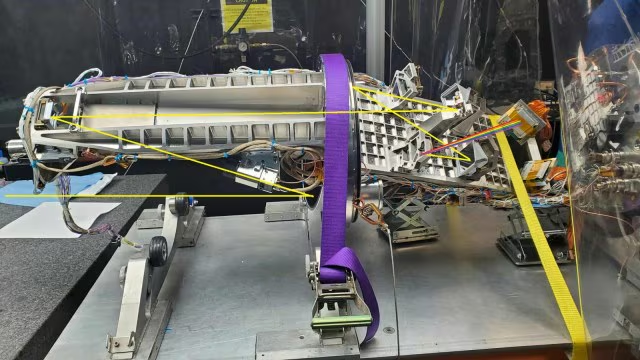





Source: IndianExpress
Disclaimer: Copyright infringement not intended.
Context
Details
|
Aspect |
Details |
|
Project Name |
CHAPEA (Crew Health and Performance Exploration Analog) |
|
Objective |
To simulate living conditions on Mars and study the effects of long-duration missions on crew health and performance. |
|
Location |
Johnson Space Center, Houston, Texas |
|
Habitat |
Mars Dune Alpha - a 3D printed airlocked habitat with 1,700 sq ft living space, including bedrooms, bathrooms, a work area, a robot station, a gym, and a vertical farm. An additional 1,200 sq ft space for extravehicular activities. |
|
Duration |
378 days (June 25, 2023 - July 6, 2024) |
|
Scenarios |
Spacewalks in suits, growing vegetables, facing communication delays, limited resources, and prolonged isolation. |
|
Aims |
To collect data on the potential impacts of long-duration missions on Mars, including physical and mental challenges faced by astronauts. |
|
Future Plans |
Two more missions planned for 2025 and 2026. NASA aims to send astronauts to Mars by the 2030s. |
|
Feature |
Details |
|
Temperature |
Ranges from 20°C to -153°C |
|
Surface |
Rocky with canyons, volcanoes, dry lake beds, and craters, all covered in red dust |
|
Atmosphere |
Thin, containing over 95% carbon dioxide and less than 1% oxygen |
|
Gravity |
About one-third of Earth’s gravity |
|
Day Length |
24.6 hours |
|
Year Length |
687 Earth days |
|
Weather |
Dust storms, visible from Earth, with tiny tornado-like structures and large storms enveloping the planet |
Important Mars missions to date
|
Mission Name |
Country/Agency |
Launch Date |
Type |
Outcome |
Key Achievements |
|
Mariner 4 |
USA/NASA |
November 28, 1964 |
Flyby |
Success |
First close-up images of Mars |
|
Mariner 6 |
USA/NASA |
February 24, 1969 |
Flyby |
Success |
Close-up images and atmospheric data |
|
Mariner 7 |
USA/NASA |
March 27, 1969 |
Flyby |
Success |
Close-up images and atmospheric data |
|
Mariner 9 |
USA/NASA |
May 30, 1971 |
Orbiter |
Success |
First spacecraft to orbit another planet |
|
Mars 2 |
USSR |
May 19, 1971 |
Orbiter/Lander |
Partial success (orbiter succeeded, lander failed) |
Orbital images and surface data |
|
Mars 3 |
USSR |
May 28, 1971 |
Orbiter/Lander |
Partial success (orbiter succeeded, lander contact lost) |
First soft landing on Mars (contact lost after 20 seconds) |
|
Viking 1 |
USA/NASA |
August 20, 1975 |
Orbiter/Lander |
Success |
First successful landing, extensive surface and atmospheric data |
|
Viking 2 |
USA/NASA |
September 9, 1975 |
Orbiter/Lander |
Success |
Surface and atmospheric data, search for life |
|
Phobos 1 |
USSR |
July 7, 1988 |
Orbiter |
Failure (lost contact) |
No data returned |
|
Phobos 2 |
USSR |
July 12, 1988 |
Orbiter/Lander |
Partial success (orbiter succeeded, lander failed) |
Data on Phobos and Martian atmosphere |
|
Mars Observer |
USA/NASA |
September 25, 1992 |
Orbiter |
Failure (lost contact) |
No data returned |
|
Mars Global Surveyor |
USA/NASA |
November 7, 1996 |
Orbiter |
Success |
Detailed mapping of Martian surface |
|
Mars Pathfinder |
USA/NASA |
December 4, 1996 |
Lander/Rover |
Success |
Sojourner rover data, surface exploration |
|
Nozomi |
Japan/JAXA |
July 4, 1998 |
Orbiter |
Failure (unable to achieve orbit) |
No data returned |
|
Mars Climate Orbiter |
USA/NASA |
December 11, 1998 |
Orbiter |
Failure (lost contact) |
No data returned |
|
Mars Polar Lander |
USA/NASA |
January 3, 1999 |
Lander |
Failure (lost contact) |
No data returned |
|
2001 Mars Odyssey |
USA/NASA |
April 7, 2001 |
Orbiter |
Success |
Gamma Ray Spectrometer data, surface composition mapping |
|
Mars Express |
European Space Agency (ESA) |
June 2, 2003 |
Orbiter |
Success |
High-resolution imaging, detection of water ice |
|
Spirit (MER-A) |
USA/NASA |
June 10, 2003 |
Rover |
Success (last contact in 2010) |
Surface exploration, discovery of past water activity |
|
Opportunity (MER-B) |
USA/NASA |
July 7, 2003 |
Rover |
Success (last contact in 2018) |
Surface exploration, discovery of past water activity |
|
Rosetta |
European Space Agency (ESA) |
March 2, 2004 |
Flyby (en route to comet) |
Success (flyby) |
Mars flyby for gravitational assist |
|
Phoenix |
USA/NASA |
August 4, 2007 |
Lander |
Success |
Confirmed presence of water ice |
|
Mars Science Laboratory (Curiosity) |
USA/NASA |
November 26, 2011 |
Rover |
Success |
Extensive geological and environmental analysis |
|
MAVEN |
USA/NASA |
November 18, 2013 |
Orbiter |
Success |
Studied upper atmosphere and ionosphere |
|
Mars Orbiter Mission (Mangalyaan) |
India/ISRO |
November 5, 2013 |
Orbiter |
Success |
Mars atmosphere and surface imaging |
|
ExoMars Trace Gas Orbiter |
ESA/Roscosmos |
March 14, 2016 |
Orbiter |
Success |
Trace gas analysis in the Martian atmosphere |
|
Schiaparelli (ExoMars) |
ESA/Roscosmos |
March 14, 2016 |
Lander |
Failure (crash landed) |
Attempted landing on Mars |
|
InSight |
USA/NASA |
May 5, 2018 |
Lander |
Success |
Seismic activity and internal structure analysis |
|
Hope Mars Mission |
UAE |
July 19, 2020 |
Orbiter |
Success |
Martian atmosphere and climate studies |
|
Tianwen-1 |
China/CNSA |
July 23, 2020 |
Orbiter/Rover |
Success |
Orbiter and Zhurong rover exploration, surface analysis |
|
Perseverance |
USA/NASA |
July 30, 2020 |
Rover |
Success |
Astrobiology, sample collection for return mission |
|
Zhurong Rover (part of Tianwen-1) |
China/CNSA |
May 14, 2021 |
Rover |
Success |
Surface exploration and environmental analysis |
Sources:
|
PRACTICE QUESTION Q: Consider the following statements regarding Mars habitats:
Which of the statements given above is/are correct? a) 1 and 2 only Answer: b) |






© 2025 iasgyan. All right reserved